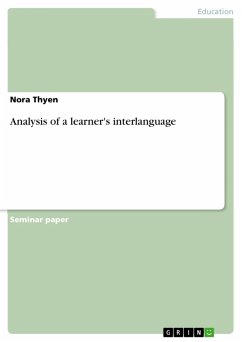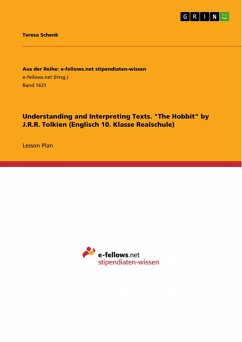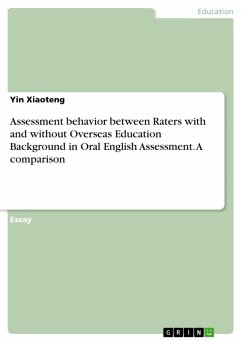Seminar paper from the year 2011 in the subject Didactics for the subject English - Pedagogy, Literature Studies, grade: 2,0, , language: English, abstract: When learning a foreign language errors occur. This is natural and can even help students improve their performances in the target language, which justifies the relevance of error analysis. Only if you are aware of and only if you understand your own errors you can try and avoid them in the future and thus improve your performance. Below I will illustrate different kinds of errors that can occur in the second language acquisition process mainly referring to non-native English speakers learning English as a foreign language in the classroom. This process is a very individual and idiosyncratic one, i.e. each student develops his or her own interlanguage when learning a new language. An IL is defined as a "language which is between two languages, the learner's L1 and an L2" (Faerch, Haastrup & Phillipson, 1984, p. 269). An IL typically shows features of both the learner's L1 and his or her L2. But there can also be found features not seeming to have anything to do with either L1 or L2. According to Yule (2006) an IL is a variable system, i.e. it changes continually. It has its own rules (Yule, 2006). This hypothesis originally comes from Selinker. According to him, there are processes characteristic of interlanguages, which leads to the interlingual errors (see 3.3 explanation). But first I will take a closer look at the possible causes of errors and after that the ways of dealing with learners' errors will be examined and in the second part of this paper a learner text containing errors typical of the second language learning process will be analyzed.
Dieser Download kann aus rechtlichen Gründen nur mit Rechnungsadresse in A, B, BG, CY, CZ, D, DK, EW, E, FIN, F, GR, HR, H, IRL, I, LT, L, LR, M, NL, PL, P, R, S, SLO, SK ausgeliefert werden.









